Do you love changing your hair color as often as you change your clothes? Us too!
Whether you want to go from bright blonde to sultry brunette or bold pink to soft lavender, there’s nothing like a fresh hair color to make you feel like a brand new person.
We’re here with everything you need to know about how to strip hair color so you can make your next color change as easy as 1-2-3!
Table of Contents
- What is hair color stripping?
- How to strip hair color at home, fast.
- Watch and learn: How to strip artificial hair color from your hair step-by-step.
- Is stripping color from hair damaging?
- Hair color stripping before and after.
- Why strip hair color?
- How do you strip dark hair dye?
- How to strip red hair dye.
- What’s the difference between hair stripping and hair bleaching?
- How do hairdressers strip color from hair?
- TOP TIPS!
- How to strip hair color without bleach.
- How to strip color from your hair naturally.
- How often can I strip my hair color?
- What should I do if my hair is dry and damaged from stripping?
- How to care for color stripped hair.
- Parting words.
What is hair color stripping?
Hair color stripping is the process of removing unwanted hair color from your strands. This can be done for a number of reasons, including:
- You want to change your hair color and need to remove your current hue first
- Your hair color has become dull or dark and you want to start fresh
- Your hair color has been damaged and you need to get rid of it it before beginning a new coloring process.
Whatever your reason for wanting to know how to remove your hair color, we’re here to help!
Keep reading for our top tips on how to get it right hair at home.
How to strip hair color at home, fast.
Method #1. Use a clarifying shampoo
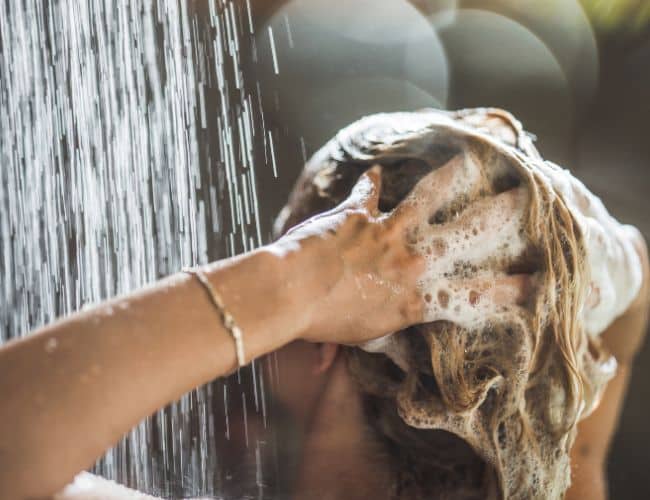
If you’re looking for an easy and gentle way to strip color from hair, then using a clarifying shampoo is your best bet.
Clarifying shampoos or are designed to remove build-up from your hair, which can include everything from product residue to excessive oils.
In addition to washing away unwanted color, using a clarifying shampoo contain ingredients that also help to restore shine and body to your strands. When used once or twice a week, a clarifying shampoo can also help prevent future color fading.
To use, simply massage the clarifying shampoo into wet hair and scalp, then rinse thoroughly. Follow up with your regular conditioner.
Anti-dandruff shampoo like Head & Shoulders are also a good way to strip hair color too!
Method #2. Try a baking soda paste
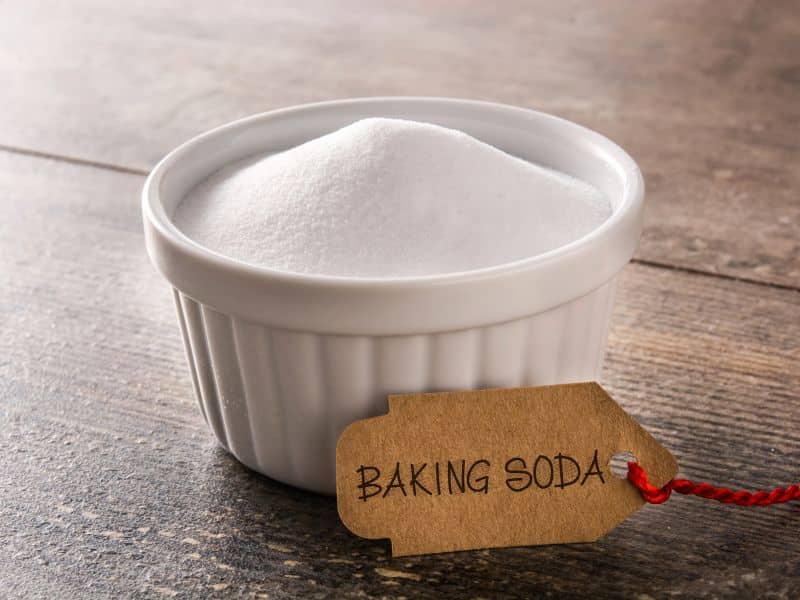
If you’re looking to try using natural ingredients – baking soda is a great natural alternative to clarifying shampoos, and can be just as effective at stripping hair color.
To use, mix equal parts baking soda and cup of water to form a paste. Apply the paste to wet hair and scalp, then massage in for a minute or two.
Rinse the paste out thoroughly, then follow up with your regular shampoo and conditioner. You may need to repeat this process a few times to completely remove all traces of color.
For an extra-potent formula, add in one part dish soap to the mix. You’ll need to make sure you rinse, rinse, rinse this mixture out!
Method #3. Use an aspirin mask
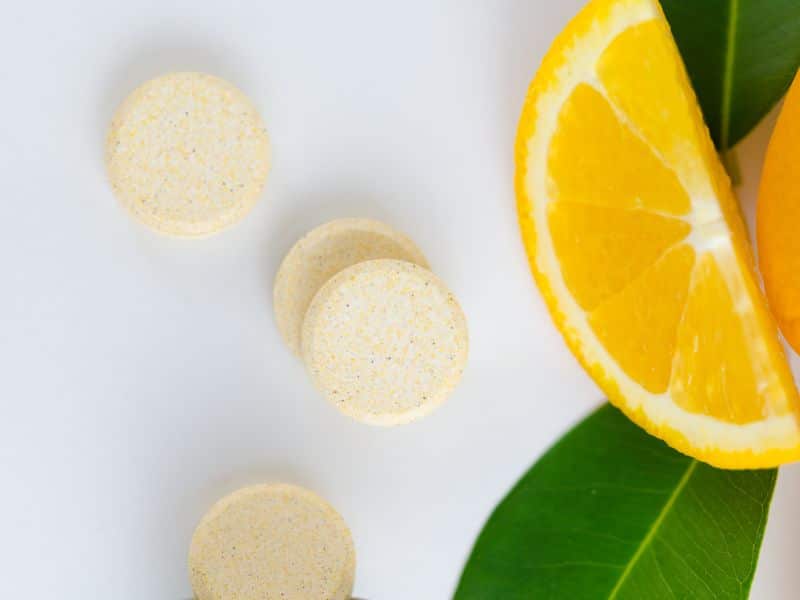
Seem strange but aspirin is another common household item that can be used to bleach hair color.
The salicylic acid in aspirin helps to break down the dye molecules in your hair, making it easier to rinse away.
To use, dissolve four or five aspirin tablets in a cup of warm to hot water. Apply the mixture to your hair, then cover with a shower cap and let it sit for 20-30 minutes. Rinse out thoroughly, then shampoo and condition as usual.
This method also works with Vitamin C tablets in place of aspirin.
Method #4. Try a vinegar rinse
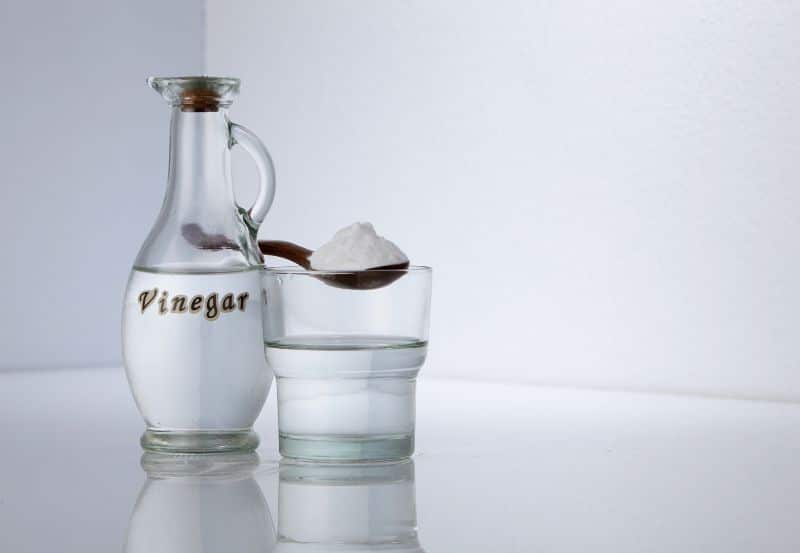
Vinegar is another great natural option for removing hair color. Yes, it’s a pretty smelly option!
To use, mix one part white vinegar (a couple of tablespoons) with two parts water. Apply the mixture to your hair, then let it sit for 15-20 minutes before rinsing out thoroughly. Shampoo and condition as usual.
Method #5. Use a lemon juice rinse
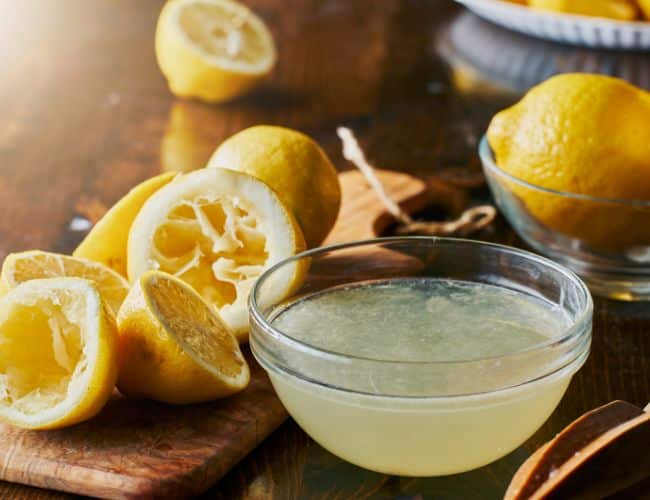
Lemon juice is another natural option that can be used to lighten up your locks.
The citric acid in lemon juice acts like a natural bleach when your hair is in the sun.
To use, mix equal parts lemon juice and warm water. Apply the mixture to your hair, then let it sit for 15-20 minutes before rinsing out thoroughly. Shampoo and condition as usual.
Method #6. Try a store-bought color remover
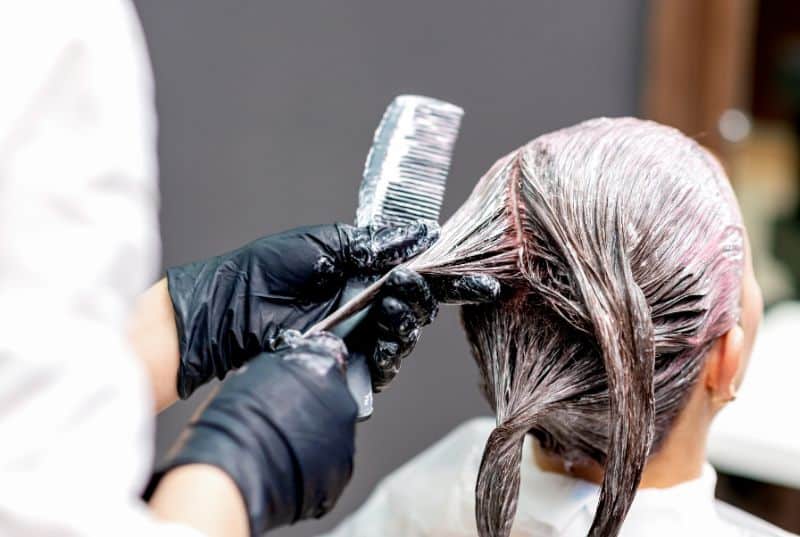
If you’re looking for a more heavy-duty option, then you may want to try a store-bought hair colour remover.
These products are designed specifically for stripping hair color molecules from your hair cuticle, and can be found at most beauty supply stores.
Follow the instructions on the product packaging, then shampoo and condition as usual. You may need to repeat the process a few times to completely remove all traces of color.
The trick is all in the rinsing. Rinse rinse and rinse some more.
Hair dye remover only removes permanent hair dye, not semi-permanent hair color or henna hair dye. And it doesn’t remove natural hair color, unlike bleach!
Method #7 Bleach!
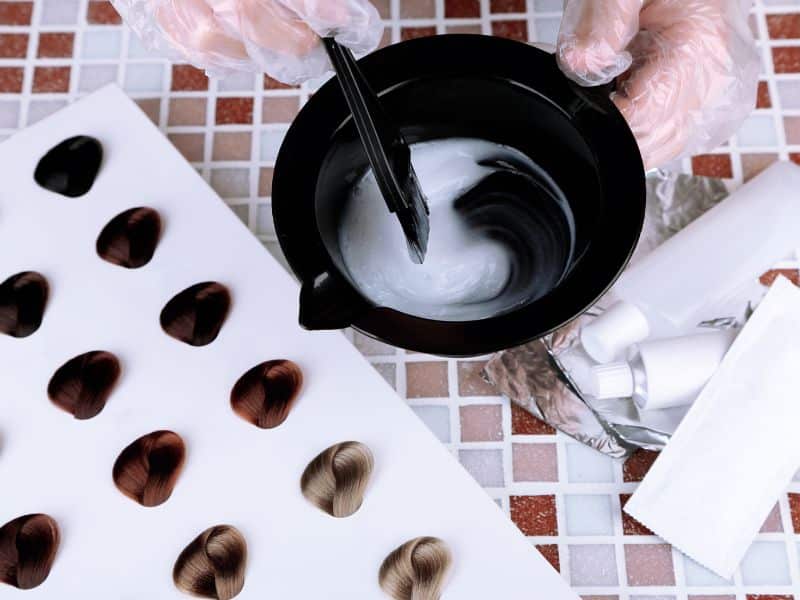
As a last resort, bleaching your hair can be a great way to remove hair color and start afresh.
When used correctly, bleaching is a simple and pain free way to rid your hair of any leftover dye – including semi-permanent hair dye.
Start by assembling all the necessary materials beforehand, a hair bleach kit including bleach powder, developer, brush, gloves, bowl, and a timer.
When ready, mix the right ratio of bleach and developer in a bowl according to the directions on the package, and apply it evenly across your hair with the brush.
Leave the bleach in for up to 30 minutes before rapidly rinsing it out.
Always do a patch test first just so you know how you react to certain products!
Most importantly – when bleaching your hair at home – practice what you preach – safety first! Keep your work area ventilated and covered to protect surfaces.
Bleach won’t restore your natural hair color or natural pigment FYI. It will remove all color pigment from your hair and give you a blank canvas so you can dye your hair again.
If you want to try something gentler, you can do a bleach bath for hair. This method mixes shampoo, bleach and developer together, which is then applied to wet hair.
It’s less harsh than traditional bleaching and can be used to lighten and brighten the color without causing too much damage.
Watch and learn: How to strip artificial hair color from your hair step-by-step.
Here’s a great video that shows you how to strip color from hair using bleach including reds and intense dark colors!
Is stripping color from hair damaging?
Yes, this process can and will be damaging! So only do it if you absolutely have to.
The chemicals in hair color removers, bleach and clarifying shampoos, and even natural solutions baking soda, aspirin, vinegar, and lemon juice, can all take away natural oils and proteins from your hair, leaving it dry and brittle.
If you’re looking to remove hair color, we recommend first using a gentle clarifying shampoo or a natural alternative like baking soda or vinegar before moving onto the hard stuff.
Make sure you do a test strand to make sure it’s going to work.
And be sure to follow up with a deep conditioner or color-safe products for bleached hair to help restore moisture and protect your strands.
Hair color stripping before and after.
Why strip hair color?
Stripping hair color is a great way to refresh your look and get rid of unwanted colors or tones.
Plus, stripping your hair can make a huge difference if you’re looking for a new style or color and want the perfect canvas for success.
Here are 8 reasons why you should consider stripping your hair color.
To remove old hair dye
If you’re unhappy with how your last dye job turned out, stripping your hair can be the perfect solution. It’ll help remove any old dye or buildup that may be causing issues with achieving the desired result.
To remove unwanted tones
If you’ve got red or orange or green tones that you want to get rid of, stripping your hair is an easy way to get rid of them without having to bleach your entire head of hair first.
To remove brassiness and yellow tones
Stripping can help take away those yellow-ish hues that often come with darker colors like browns and blacks.
It will also help remove any brassiness that has crept into lighter colors like blondes and reds over time due to environmental factors such as sun exposure and hard water minerals in shower water.
To make a clean canvas for new colors and hair dyes
If you’re looking for a brand new look, then stripping your hair is essential for removing all traces of previous color so there won’t be any interference when it comes time to apply fresh dye or highlights.
You don’t like your color
Sometimes we take risks with our color choices only to find out later on that we don’t like how it looks on us after all!
Stripping is one way to start fresh without having too much damage done in the process (provided it’s done correctly).
To correct color banding
Hair color banding tends to happen when multiple layers of dye are applied onto existing layers of dye, resulting in uneven stripes throughout the head of hair rather than even coverage overall.
Stripping helps fix this issue by getting rid of those extra layers so they won’t affect how the new color turns out in the end results!
To correct hair color that’s too bright
If you went too bright with your current hue, stripping can help tone it down so it won’t be quite as intense when you reapply fresh color onto strands afterwards!
To correct color that’s too dark
On the flip side, if you went too dark with your current shade then stripping can lighten things up again. So when you reapply fresh dye afterwards there won’t be any surprises hiding underneath (like pink or green tones or streaks!).
How do you strip dark hair dye?
Dark hair dye can be stubborn to remove and natural solutions like lemon juice or vinegar may not be strong enough. (Stripping black hair dye is the worst!) In this case, you need bleach.
If you’re ready to break up with your dark hair dye, there are a few things you need to know.
First, it’s important to understand that this will be an intense process. You’re essentially going to be shocking your hair, so it’s important to take care of it afterwards. Secondly, you’re going to need some supplies.
Head over to your local beauty supply store and pick up a clarifying shampoo, a deep conditioner, and some bleach. Once you have your supplies, it’s time to get started.
Section your hair in small sections, and apply the bleach carefully to remove as much of the dark dye as possible.
Once you’re finished bleaching, shampoo and deep condition your hair to help repair the damage. You may need to do this more than once to get all of the color out.
Although it’s a bit of a process, lightening dark hair is definitely doable at home.
Just make sure you’re prepared for the aftermath with good toners and a fresh color to restore your hair health and shine.
How to strip red hair dye.
Red hair dye can be also be a tricky color to remove. The first step in stripping red hair dye is to figure out what type of dye was used.
If you’ve used box dye for an at-home dye job, your best option is likely going to be using bleach or an intense chemical treatment from a professional hair stylist. Bleach will lift some of the existing color but won’t completely remove it.
A hair color remover will remove hair dye and get rid of unwanted color pigments, but hair color removal only works on permanent hair dyes not semi-permanent!
There are also ways that you can naturally fade out stubborn red hues.
You can simply wait until they grow out over time or by using something like lemon juice mixed with a little water as an alternative solution for lighter shades (this may not work quite as well on darker colors).
There’s always something that can be done if you’re willing to put in the effort!
What’s the difference between hair stripping and hair bleaching?
Hair bleaching is a chemical process that uses bleach to lighten hair. This can be done professionally, or at home with a kit.
Hair stripping, on the other hand, is a process of using chemicals to remove hair color. This is typically done when someone wants to remove artificial color from their hair, or when they want to prepare their hair for a new color.
For this, you can use a hair color remover. Hair color removers work by breaking down the hair’s pigment molecules, while bleaching uses oxygen to oxidize the melanin in your hair.
Stripping is usually done in a salon by a professional, while bleaching can be done at home. Bleaching is more likely to damage your hair, but it can also be more effective at lightening your hair.
Both processes can be damaging to hair, so it’s important to use a deep conditioner afterwards.
You may also want to consult with a professional before attempting either process at home.
How do hairdressers strip color from hair?
Color stripping is a job that stylists and colorists are trained to do.
The first step is to identify the type of color that needs to be removed. This will determine the type of hair colro remover that will be used – or whether they’ll need to use bleach.
If you have direct dye or semi-permanent dye to remove – a non-oxidative color stripper will be used.
If you have permanent color to remove – an oxidative color stripper will be used.
Once the type of product and method is determined, the hairdresser will mix it with water and apply it to your hair.
They will then use a hairdryer to heat up your hair, which helps it to process faster and work better.
After about 15 minutes, they will rinse it all out and shampoo your hair.
This process may need to be repeated several times to completely remove all traces of color (that’s why we love having it done at a salon as it saves our arms aching in the shower!).
As we mentioned, this process can be a bit harsh on your strands, so it’s important to follow up with a deep conditioning treatment.
Your hairdresser can help you choose the right product for your hair type and natural color.
TOP TIPS!
5. Finally, if you plan on re-dyeing your hair, be sure to wait at least a week before doing so. This will give your hair time to recover from the lightening process.
How to strip hair color without bleach.
If you want to avoid bleaching your hair, you can try using a color stripper.
Color strippers or hair color removers work by breaking down the hair’s pigment molecules. They are typically used to remove artificial color from hair, or to prepare hair for a new color.
You can find these miracle products at most beauty supply stores. Just make sure to follow the instructions on the package, and be sure to deep condition your hair afterwards.
Remember that chemicals like hydrogen peroxide can be harsh on your hair, so it’s important not to overdo it.
How to strip color from your hair naturally.
There are a few ways to remove hair color in an ammonia-free and bleach-free way.
One way is to use a clarifying shampoo. Clarifying shampoos are designed to remove build-up from hair, and can also help remove unwanted color.
Another way is to mix baking soda and water into a paste, and apply it to your hair. Leave the paste on for 15 minutes, then rinse it out.
You can also try mixing apple cider vinegar and water, and using it as a final rinse after shampooing your hair.
Remember that these methods may not be as effective as bleaching, and they may lift your hair rather than restore your natural colour, but they are gentle alternatives that won’t damage your hair.
How often can I strip my hair color?
Stripping hair color isn’t something you should do too often!
It involves using harsh chemicals that can strip away essential oils that keep your hair looking healthy and shiny.
You can strip your hair color twice in one day. But to make sure your locks don’t suffer too much, try to leave at least 24 hours in between to give your frazzled hair time to recover.
Same goes for re-dying your hair. If you find that your hair won’t take hair dye or color after stripping, wait a week to give your strands time to strengthen and smooth.
What should I do if my hair is dry and damaged from stripping?
If your hair is dry and damaged after removing unwanted color, you’ll want to use a deep conditioner to nourish and restore moisture and return elasticity to your hair.
You can find deep conditioners at most beauty supply stores. Just make sure to choose one that’s suitable for your hair type.
Apply the conditioner to clean, damp hair, and leave it on for 15 minutes. Then rinse it out with cool water.
Do this once a week until your hair is healthy and hydrated again.
How to care for color stripped hair.
Caring for color stripped hair can seem like an impossible task, but it doesn’t have to be! With the right tips and tricks, you can restore your locks and make them look oh-so-soft and silky again.
Start off by shampooing with a gentle, sulfate-free shampoo.
Afterwards, deeply condition your locks with a deep conditioning mask or treatment that is designed specifically for color treated hair.
Use this type of product every time you wash your hair to ensure that your color stripped hair looks lush and healthy.
If your hair is looking brassy or showing unwanted orange or yellow tones, use a good purple shampoo to correct the color and keep it bright.
Never underestimate the power of using a heat protectant when styling. It can really take it from frayed and dry to smooth and soft in no time!
It may just take a few minor adjustments to your regular haircare routine for incredible results that will have you feeling great about your hair.
Just remember that finding what works for you is key – don’t be afraid to mix and match tips and products until you find a combination that works best for you.
Parting words.
So there you have it! Six ways to strip hair color, from gentle methods to harsher techniques.
Remember that it’s always best to consult with a professional stylist before stripping your hair color. They can help you choose the best method for your hair type, and will also be able to provide aftercare instructions.
Whatever you decide, good luck!
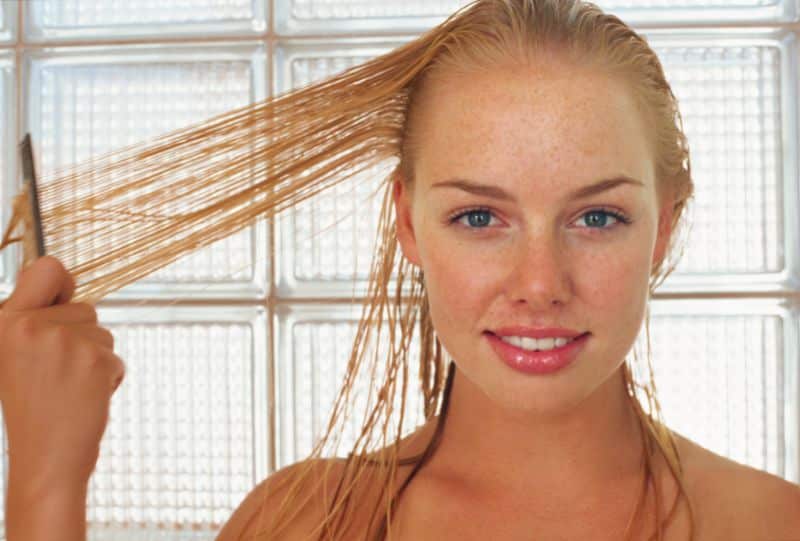
![How To Strip Hair Color [7 Fast And Easy Ways] 10 Enza Piazza, Hair Stylist & Color Consultant](https://www.colouredhaircare.com/wp-content/uploads/2023/11/Enza-author-picture-e1701335536949.png)